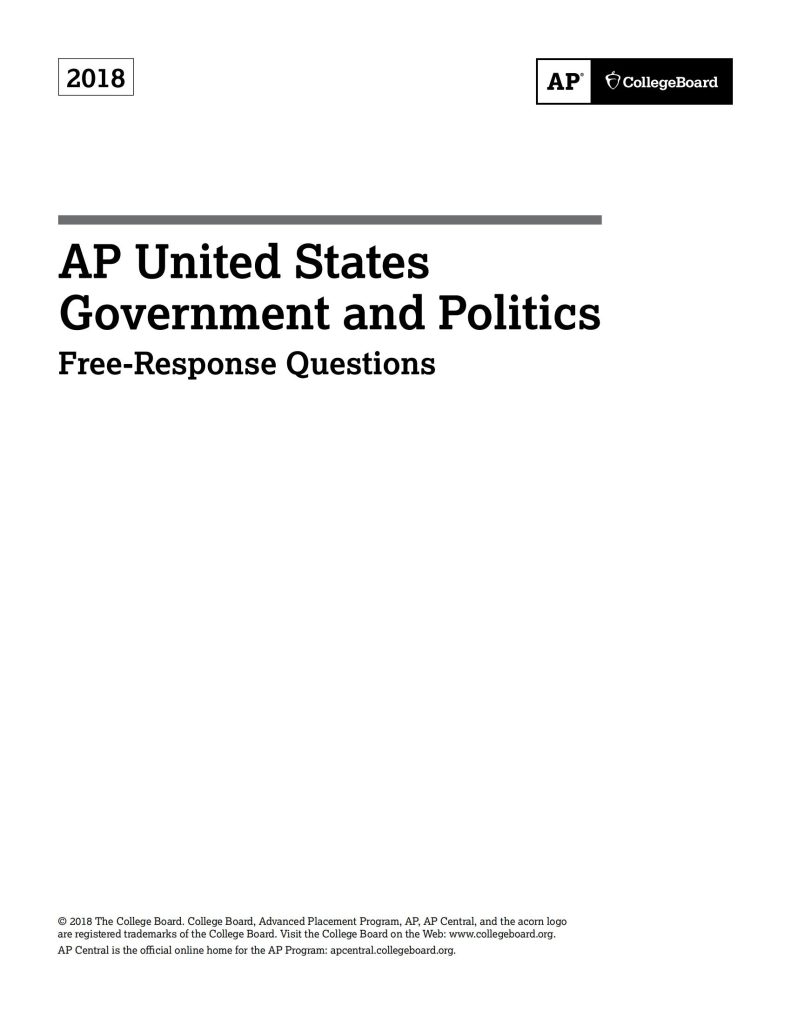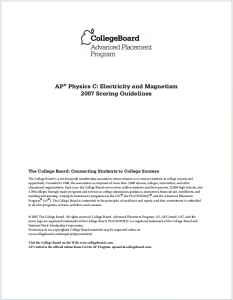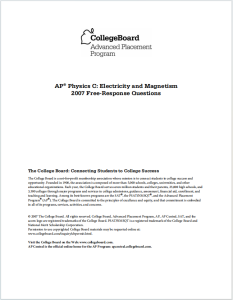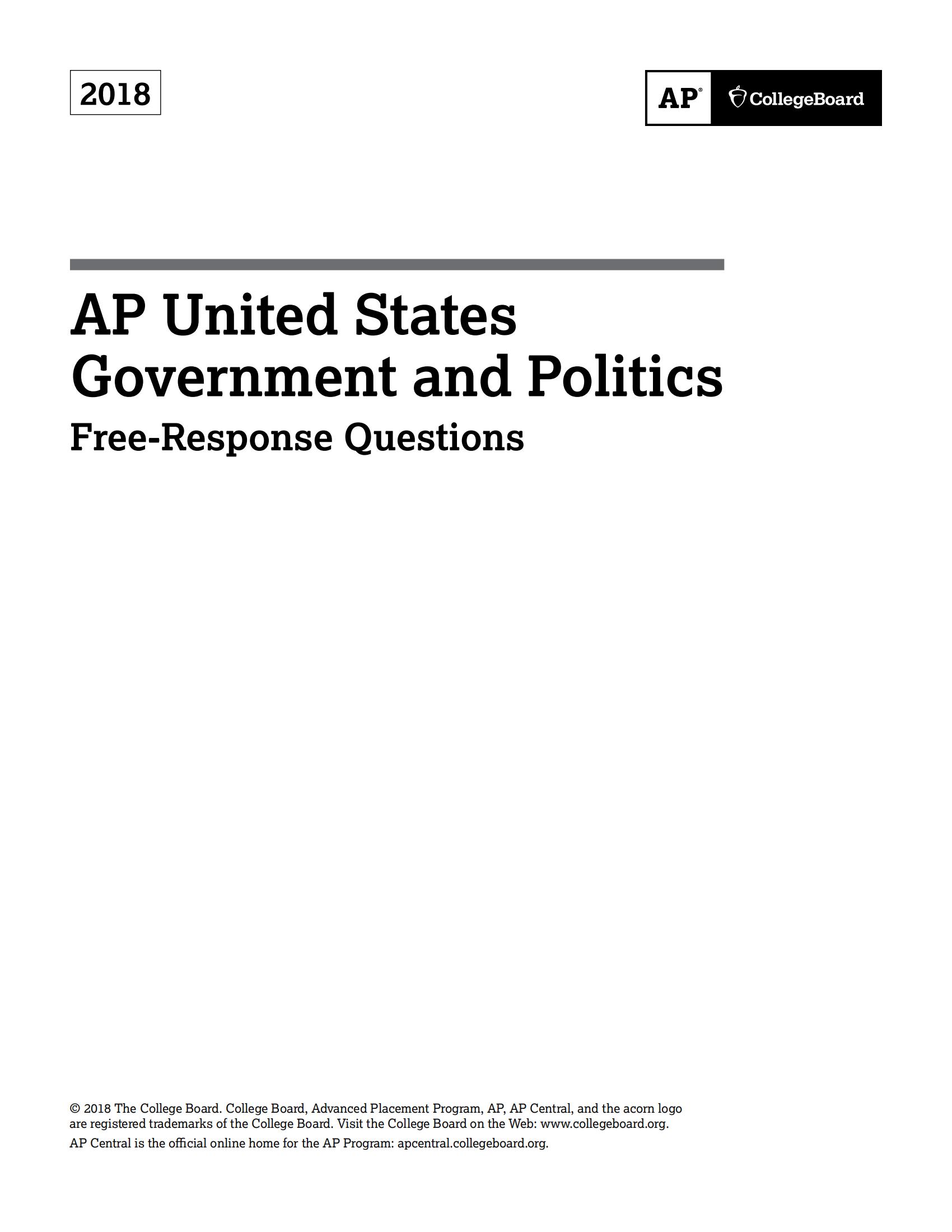
例题:
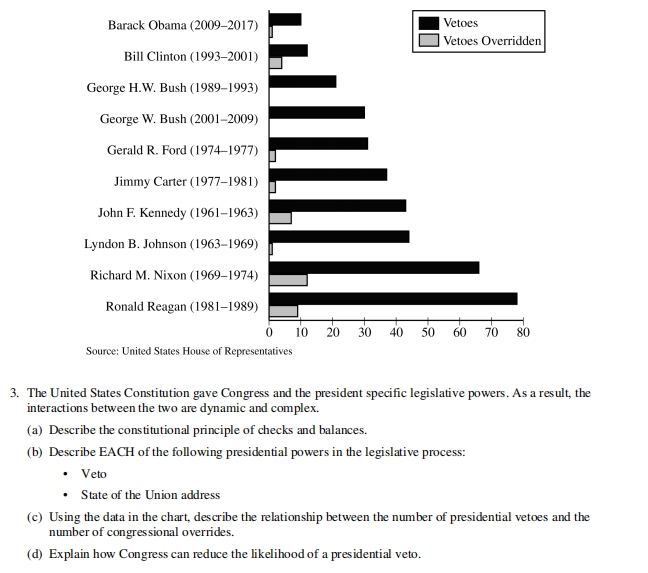
这道题考察了美国宪法中关于权力制衡的原则及总统和国会在立法过程中的互动。
(a) 权力制衡的宪法原则:
- 权力制衡是指政府的三个分支(立法、行政、司法)相互制约和监督,以防止任何一个分支过于强大。总统可以否决国会通过的法案,而国会可以通过三分之二的多数票推翻总统的否决。
(b) 总统在立法过程中的权力:
- 否决权(Veto):总统可以拒绝签署国会通过的法案,使其无法成为法律,除非国会以三分之二的多数票推翻否决。
- 国情咨文(State of the Union Address):总统每年向国会发表国情咨文,提出政策优先事项和立法建议,影响立法议程。
(c) 图表数据中总统否决和国会推翻的关系:
- 图表显示,不同总统行使否决权的次数不同,而国会推翻否决的次数则更少。这表明总统否决通常是一种有效的制衡手段,国会推翻否决的难度较大。
(d) 国会如何减少总统否决的可能性:
- 国会可以通过与总统协商,达成两党共识,确保立法符合总统的政策优先事项,从而减少否决的可能性。
- 关注总统关心的问题和优先事项,以提高法案通过的可能性。
这些回答展示了总统和国会在立法过程中的互动及其制衡机制。
评分标准解析:
Part (a): 1 point
One point is earned for describing the constitutional principle of checks and balances.
One branch of government exercises power in order to prevent another branch from becoming too powerful.
Part (b): 2 points
One point is earned for describing the veto in the legislative process.
The veto allows the president to refuse to approve a bill passed by Congress.
One point is earned for describing the role of the State of the Union in the legislative process.
The State of the Union is given by the president to Congress to outline the president’s legislative agenda/agenda setting, or to influence legislation.
Part (c): 1 point
One point is earned for using the data in the chart to describe a relationship between the number of presidential vetoes and the number of congressional overrides.
- Vetooverridesare rare compared to presidential vetoes.
- Generallythemore presidential vetoes, the more veto overrides.
Part (d): 1 point
One point is earned for explaining how Congress can reduce the likelihood of a presidential veto.
- Withdraw thelegislation.
- Makeconcessions to the president.
- Negotiate with thepresident.
- Rally the public toinfluence the president.
A score of zero (0) is assigned to an answer that is off-task or is attempted but earns no points. A score of dash (—) is assigned to an answer that is blank.


